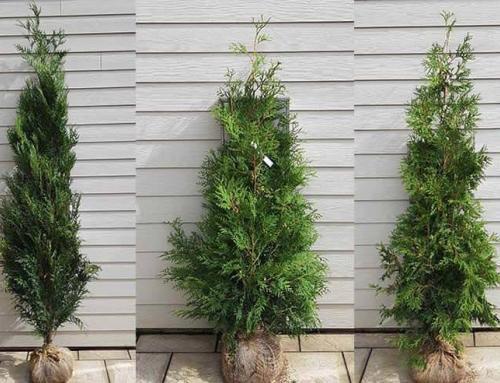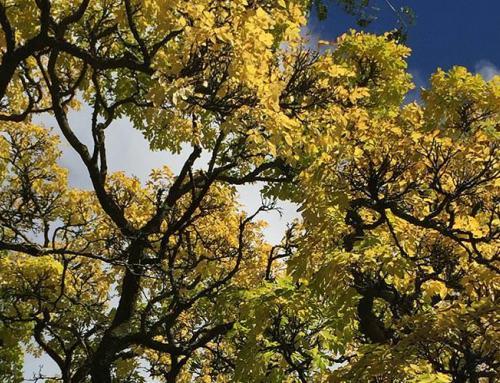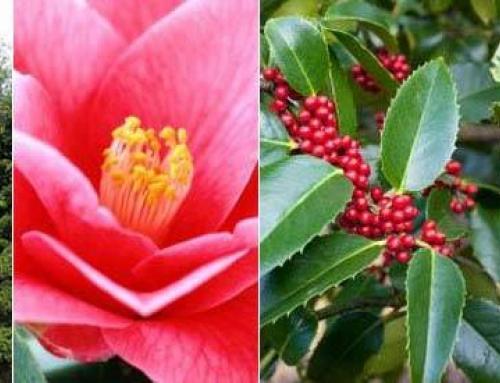Ever wondered what exactly full standards refer to when choosing trees for your garden? Well, you have come to the right place! The form of the tree you purchase is an important consideration when deciding on which specimen to choose.
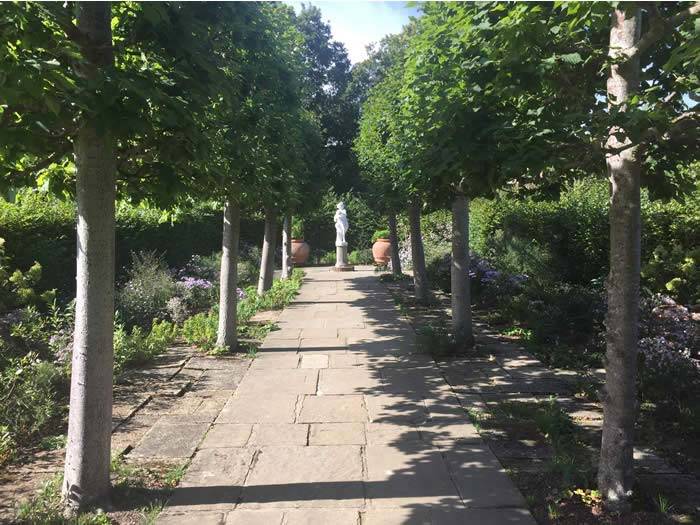
Full Standards – a walkway lined with rows of full standard pleach lime trees
There are specific, generally accepted terms used by nurseries across the UK as defined by various government regulations and standards. The terms describe commercially recognised cultivated tree shapes. These terms used to describe the ‘form’ of a given tree are meant to assist the consumer with determining the cultivated shape, as opposed to terms which help describe varietal factors like appearance, foliage colour, shape and flower colour. Shape definitions relate to the crown’s shape and presentation, such as columnar, boxed, spreading, etc. Size descriptors include girth, height, and pot size. Sizes are reported as measured at the point of sale. Girth is the circumference of the trunk for Standard (Std) trees, which we’ll explain shortly. ¼ or ½ Standard Trees and olive trees are the exceptions, where their girths are measured half way up the trunk.
Standard Trees (also Full Standard)
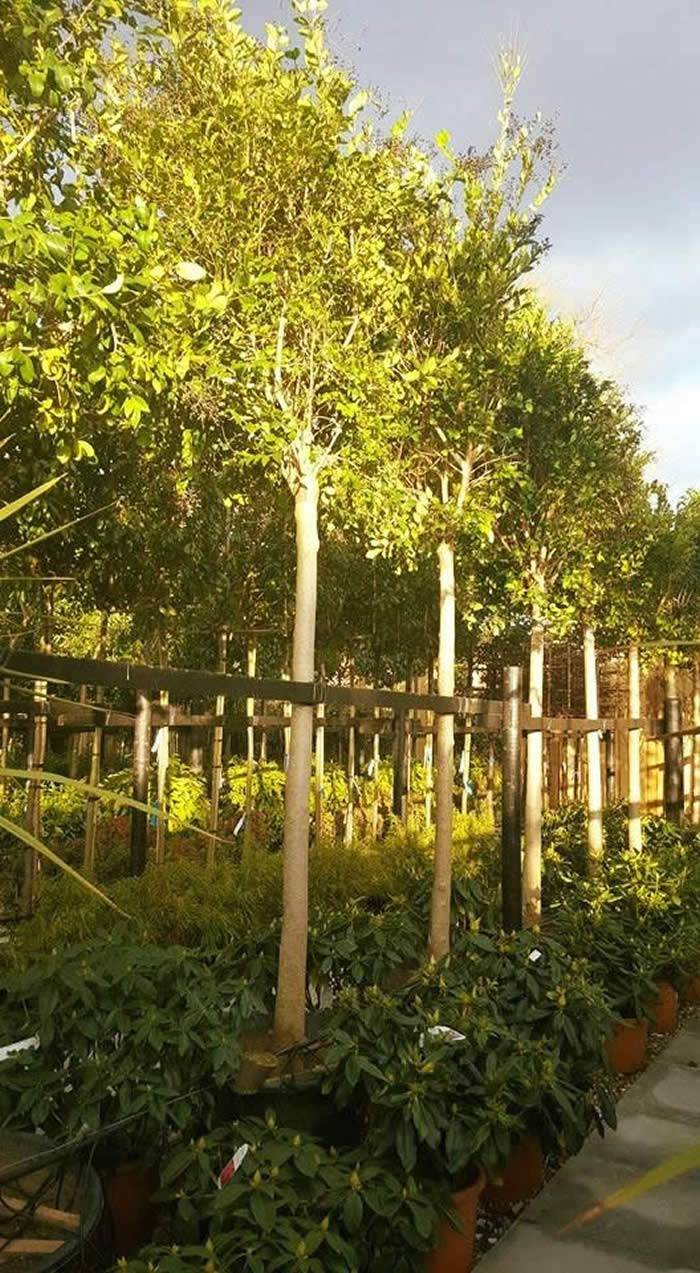
Full Standard Trees – demonstratng the clear stem shape of full standards
A standard form tree has a single, straight trunk, absent of lower branches for a minimum of the first 1.8 metres. It is important that if you desire your fully grown tree to be of Standard form once mature, you specify this and verify that it already has a trunk clear of branches to 1.8 metres. If you’re buying a much younger tree which you will prune and trim to Standard form, you will want to make sure it has a straight main trunk with no bends or forks. You then train it as such so as to create and maintain the Standard form you desire. The ‘trick’ is to do so while maintaining a symmetrical, balanced framework of laterals as the crown of the tree develops. If you’re not trained in this practice, you should best seek advice online or from an arborist or qualified horticulturalist.
A Standard form tree should be specified by girth size, and if possible, pot/container size. Keep in mind to choose full standards with adequately sized pots.
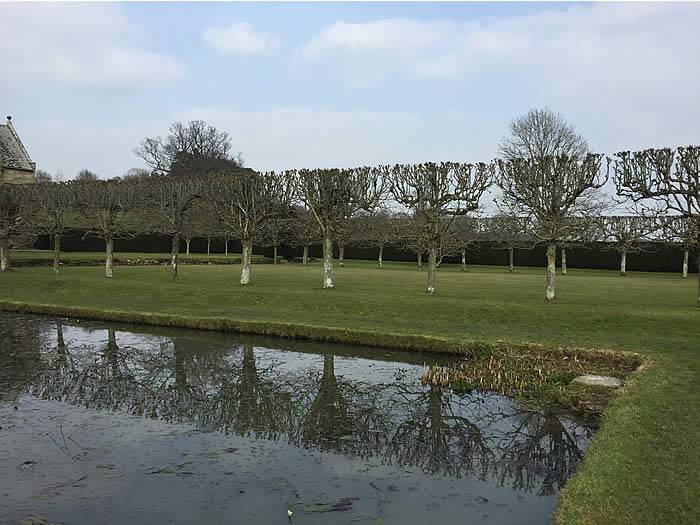
Pleached Trees in a row looking very sculptural even in winter
Half-Standard Trees (HS)
A Half Standard tree form will have a different look and placement than Full Standards. The guideline specification for their clear trunk height to first branches is between 1.2-1.5 metres. These tree forms are best in containers or as a feature in a small garden bed.
¾ Standard Trees
Some trees are categorized as having a ¾ Standard form, such as olive trees and bay trees. They will have trunks clear of branches to approximately 80-90 centimetres. In the case of a ¾ standard olive, for example, it will measure 90 cm to the leaves, then have a head diameter of 40-50 cm, with a total height of 140-150 cm.
Quarter Standard Trees (QS)
An even more compact tree form is the quarter standard tree. Typically grown in containers for the patio or in a raised planter structure, the Quarter Standard Form will possess a trunk cleared of lower branches for the first 1.2-1.5 metres.
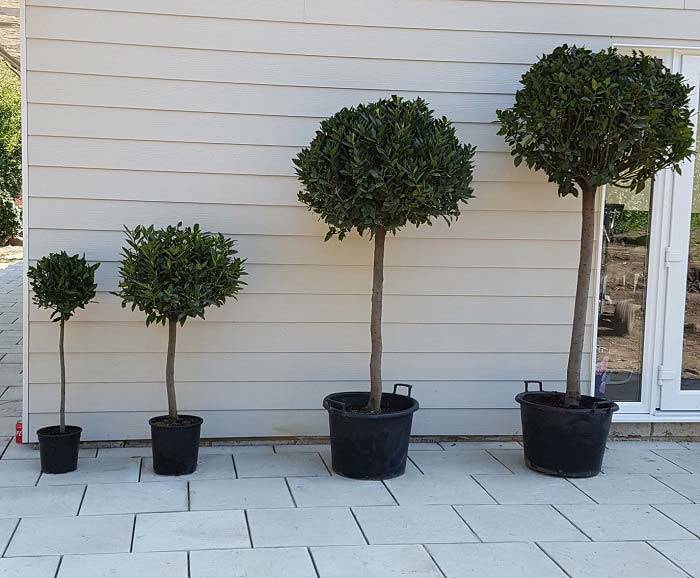
Four standard sizes of our topiary bay lollipops: Tree forms are ¼ ½ ¾ and full standards (left to right)
Watch our 3 minute video explaining standard trees and their uses:
Feathered (Fth)
A feathered tree has a central trunk with lateral branches from the ground up.
Multi-Stemmed Trees (MS)
This type of tree form has many stems emerging laterally just above the ground surface. To form this type, the trunk is actually cut off above a node when young, so that multiple buds and subsequent stems arise from that, with usually at least 3 allowed to develop into the resulting tree. Occasionally, arborists and hortic
ulturalists will use the term multi-stemmed when planting more than one tree close to another and training as above.
Other Tree Forms:
Pleached trees come in varying proportions and sizes, generally with clear stems but have been trained in some fashion, typically using a bamboo frame. They might be shaped to grow as an aerial screen above a fence or wall (often referred to as stilted hedging). Pleached trees can also come in a box or cubed shape. A typical ‘aerial’ pleach will have a 2 metre trunk and a ‘panel’ of approximately 3 metres X 2 metres for aerial screen applications.
Pleached trees do not always have to be aerial or stilted. The most important point about pleached trees is that the crown is trained in a horizontal manner. Our pleached tree collection includes for example Pleached Bay Trees, which have been pleached on bamboo frames from the ground (or pot level) upwards. The idea is to provide an instant living screen that does not take up a large amount of lateral space.
Espaliered Trees can be similar to pleached fruit trees, but are formed so as to be grown along a wall or fixed structure. The Espaliered technique is most often used for Fruit Trees. They are an excellent fit where space is at a premium. Fan Trained Trees are also a form that ends up as the name suggests. These are also very useful as a decorative focal point on vertical structures, walls, or fences. Fruit trees which prefer a warm sheltered aspect, such as peaches and apricots can do very well on warm, south facing verticals to capture more heat, and fan shaping adds a nice decorative touch. Fan trained shapes are created using a set of horizontal wires and a short, clear stem of about 0.5 metres with a set of branches above formed to a fan shape by pruning, while being trained with the wires.
Espaliered and Fan Trained Trees will need the appropriate summer pruning in order to maintain the desired artistic or functional form you intended. Typically, a mature fan trained tree will consume 3-4.5 metres in width and 2.5-3.0 metres in height.
Most types of fruit trees on the market can be trained as espaliers or fans, though some varieties are better than others. You can train your own shapes, but you need an untrained, 1-year old ‘maiden’ tree on a suitable rootstock. You should seek more training and information on the best rootstocks and methodology if you are not familiar with this style of tree forming.
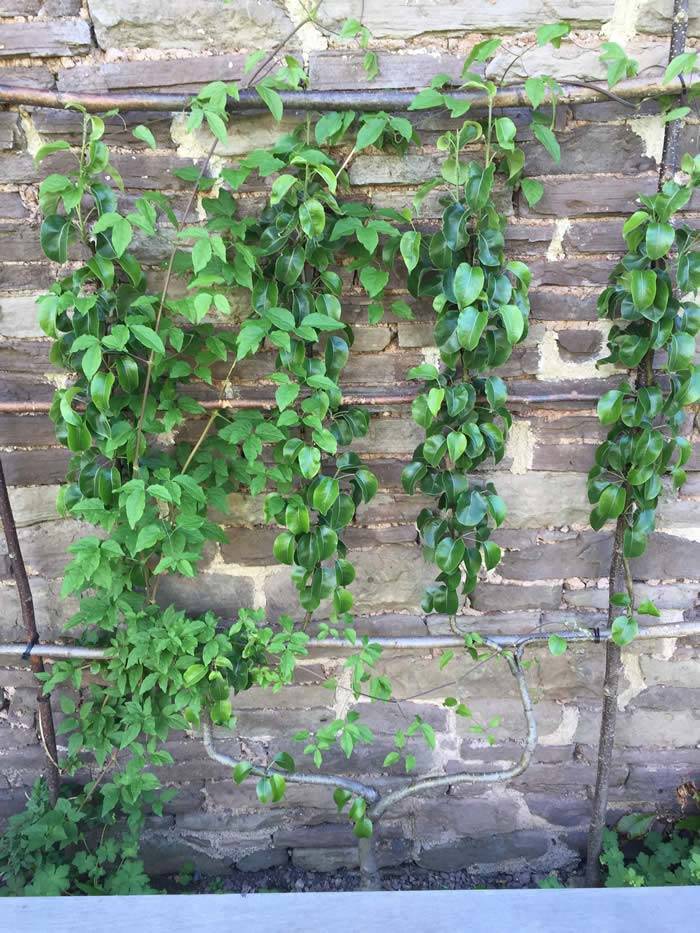
Espaliered Fruit Tree carefully trained against a sunny wall
Some suggestions relating to Tree Forms: Girth size is an important piece of information when selecting Full Standards, Half Standards and Quarter-Standard Tree Forms. Pot size is also important, though of secondary importance when buying Standard forms. Feathered trees and multi-stemmed forms should specify height as well as pot size; but girth is typically of secondary importance. Pleached trees should specify girth and pot size, and dimensions of any of the laterals and pleached features can be useful.
Staking Trees
Remember when planting trees to make sure that adequate staking is factored in that is not likely to move in winter storms. Stakes can normally be removed in around 3-5 years. Our Tree Stakes and Ties pack is perfectly designed for planting clear stemmed trees – one pack for one tree – it couldn’t be easier!


